In the gardening world, very few plants look as graceful as hollyhocks (Alcea rosea). These magnificent perennial flowers are often found incottage gardens.
The satin-soft flowers come in a burst of colors, such as pink, lavender, red, yellow, white, and salmon. Their most dramatic color, however, is black. While not truly black, these hollyhocks have intense dark burgundy or maroon petals, giving them a unique appearance.
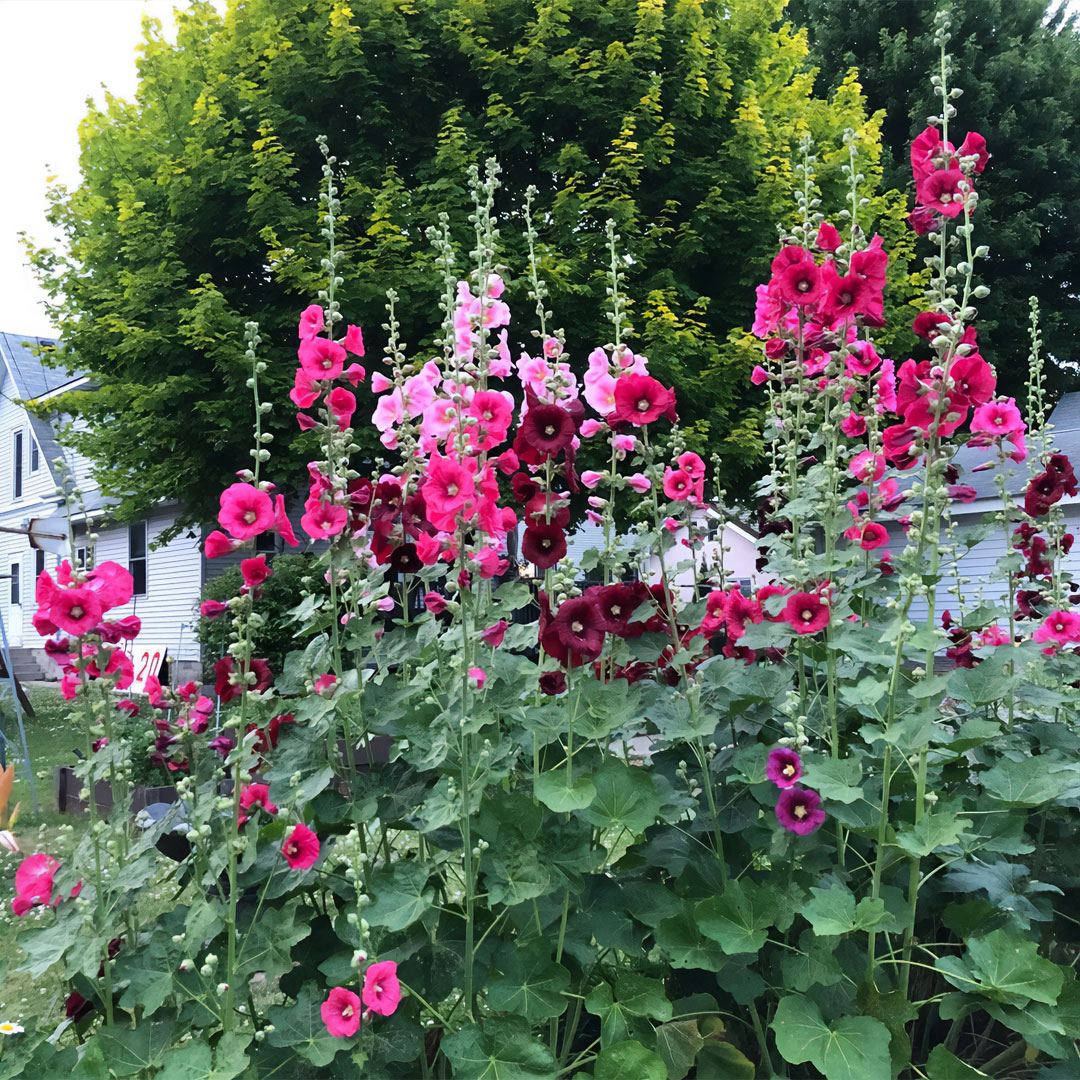
What Time of the Year Do Hollyhocks Bloom?
Hollyhocks typically bloom from late spring through mid-summer. Their spectacular display usually begins in late May or early June. Yet this depends on the local climate and growing conditions. This timing may also vary slightly based on the hollyhock variety and the region in which they are cultivated.
Thesespring flowershave a long blooming season that extends up to several weeks. Each bloom opens for a few days before gradually wilting, making way for new blossoms. Hollyhocks are perennials, meaning once you plant them, they’ll regrow flowers yearly.
To maximize their blooming potential, ensure they receive plenty of sunlight and are planted in a well-draining soil with adequate moisture.
Quick Facts about Hollyhocks
Native Range:Central Asia and Europe
Hardiness Zones:2 to 10
Height:Typically 6 to 10 feet
Bloom Time:Late spring to mid-summer
Are Hollyhocks Safe to Eat?
While many garden flowers have found their way into the kitchen, hollyhocks aren’t a favorite. They are technically edible but have a bland to bitter taste. Also, they produce a resin that may cause skin irritation. So, consume the plant with caution.
Some people add them to salads for a touch of color. They are even used as garnish and infused in tea. Keep in mind that adding hollyhock flowers to dishes is more about their ornamental appeal than their flavor.
Image credits:floracocina.
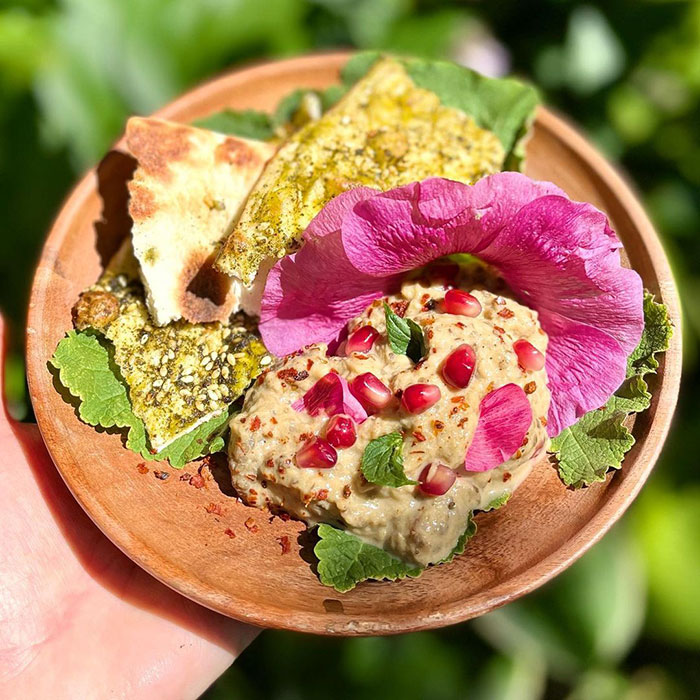
10 Most Common Varieties of Hollyhocks
Hollyhocks come in a wide array of varieties. Each type adds a unique charm and color palette to the garden. Let’s explore the ten most common varieties you can grow.
Chater’s Double Mix (Alcea rosea)
Chater’s Double Mix is the most popular hollyhock variety. It produces fully double, ruffled blossoms in eye-catching shades of pink, red, yellow, and white. This variety creates a stunning vertical display in any garden.
Image credits:Pezibear.
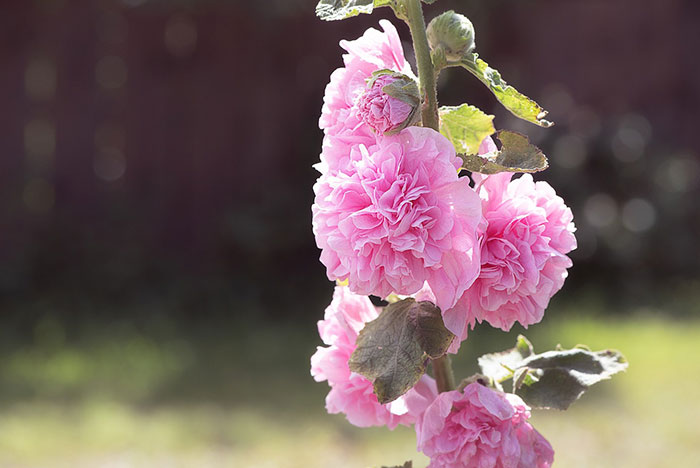
Nigra (Alcea rosea ‘Nigra’)
These flowers are popularly known asblack hollyhocks. However, this unique variety isn’t truly black. Instead, it has deep maroon, almost black blossoms. These dark flowers are a favorite forfarmhouse-style decordue to their striking color.
Image credits:Nikolett Emmert.
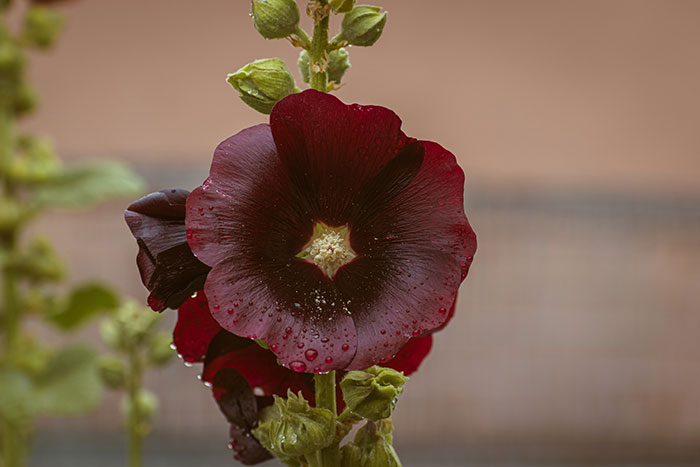
Halo Series (Alcea rosea ‘Halo’)
Image credits:CodyCATastrophe.

Indian Spring (Alcea rosea‘Indian Spring’)
This variety is a biennial and has a longer life cycle. It needs full sun exposure to bloom. TheIndian springgets its name for its mix of bright, cheerful colors reminiscent of a lively Indian festival. These flowers bloom in shades of pink, red, and yellow, creating a cheerful garden display.
Image credits:Shahzal.
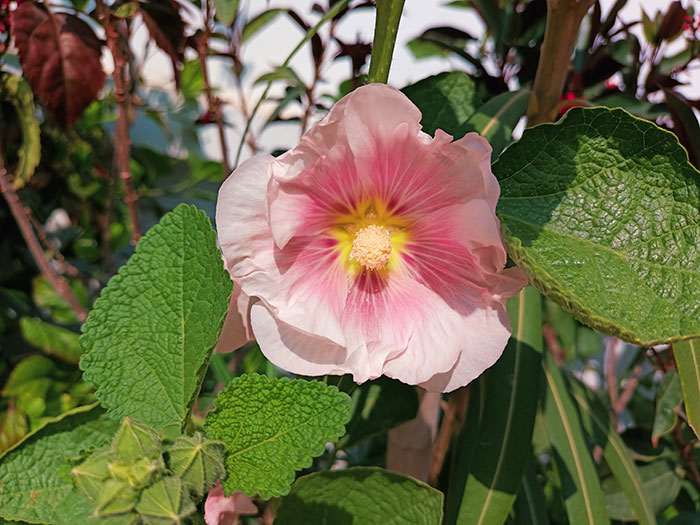
Majorette (Alcea rosea ‘Majorette’)
Majorette hollyhocks have frilly blooms. They are ideal for smaller gardens orcontainer plantingas they grow to only 30-40 inches. They feature semi-double blooms, meaning they have more petals per flower than any other hollyhock variety. These sun-loving flowers come in various colors, like pastels, pink, and peach.
Image credits:floreagarden.
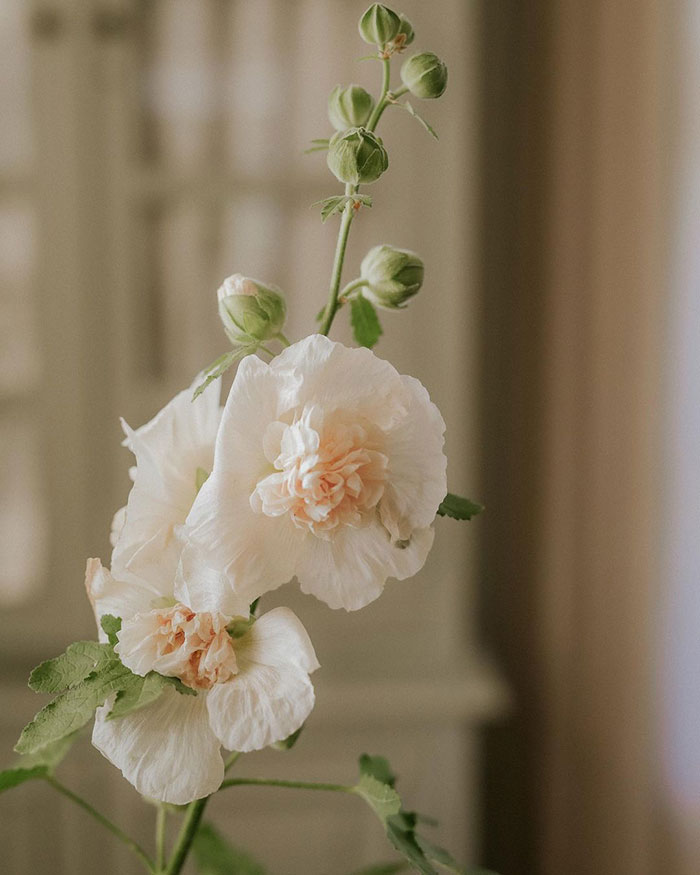
Queeny (Alcea rosea ‘Queeny’)
Queeny hollyhocks are a compact variety with a bushier growth habit. This is a short-lived perennial variety, meaning they bloom for only 3-4 flowering seasons. The most common color of Queeny hollyhocks is purple. Still, they also come in a delightful range of colors, such as soft pinks and bright reds.
Image credits:hanaearthgardensca.
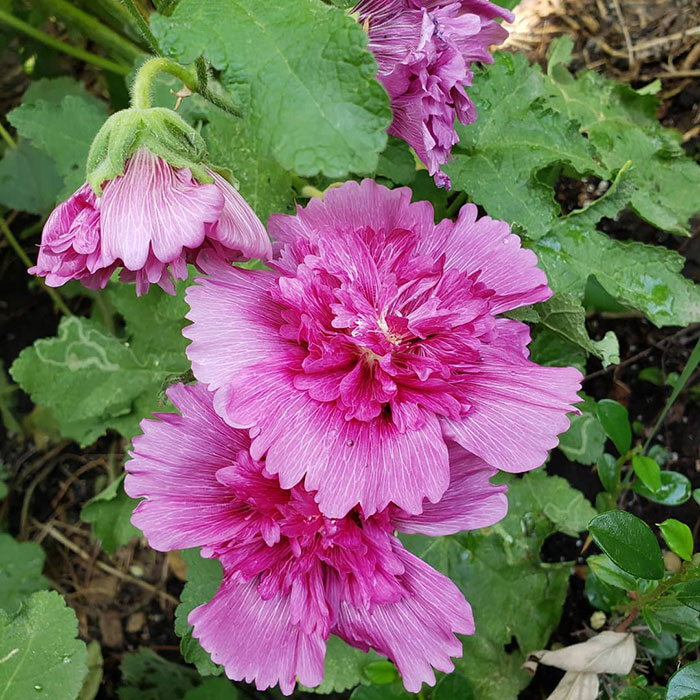
Creme de Cassis (Alcea rosea ‘Creme de Cassis’)
This variety has semi-double flowers splashed with different colors. They have ruffled petals, usually in soft pastel shades. Like the halo variety, they also feature inner rings in dark pink shades. Along with that, they have a pale yellow stamen that attracts a lot of pollinators.
Image credits:gablehouseflowers.
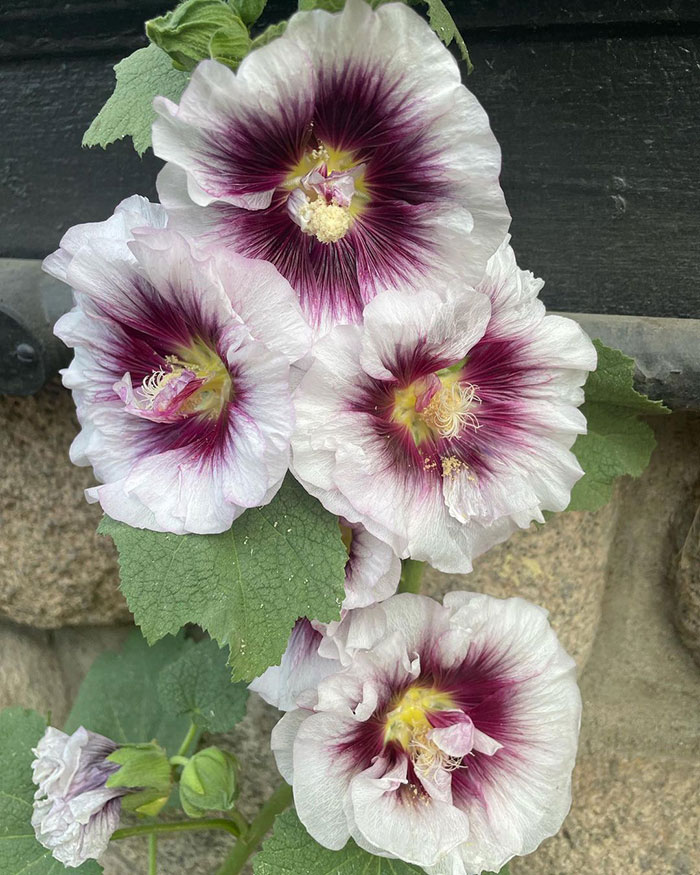
Russian Hollyhock(Alcea rugosa)
Alcea rugosa is a Russian variety that grows 6-7 feet. It produces distinct butter-yellow blooms that are edible and quite attractive to hummingbirds. Gardeners think this kind is more resistant to diseases, especially the hollyhock rust.
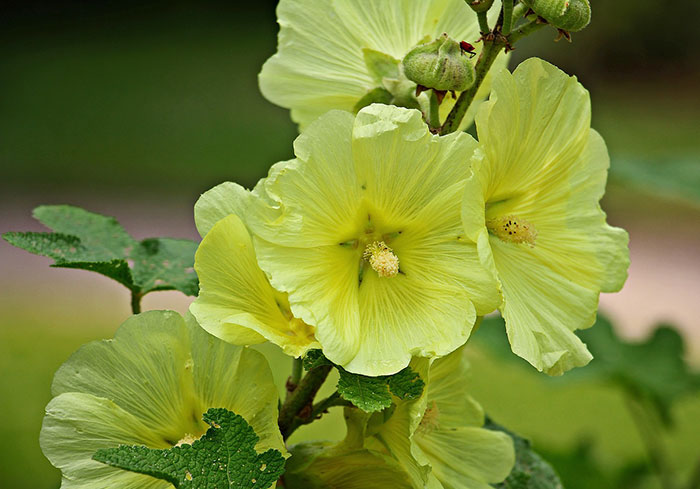
Bristly Hollyhock(Alcea setosa)
This ornamental variety is native to the Levant region (Turkey, Lebanon, Jordan, Syria). The bristly hollyhock is the only variety that starts blooming in April. It produces large, pink blossoms.
Image credits:RDNE Stock project.
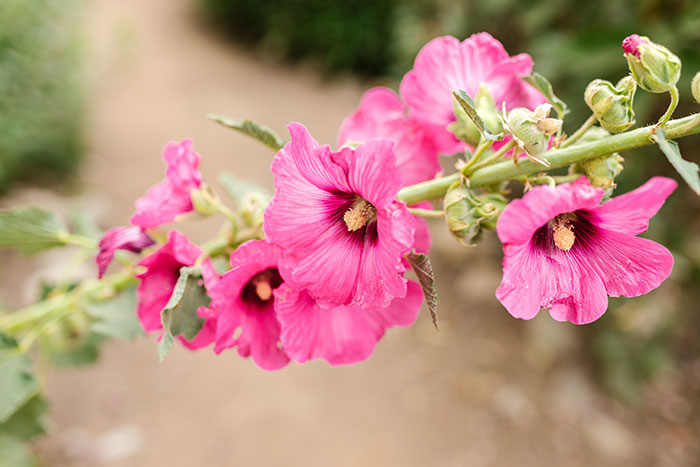
Summer Carnival (Alcea rosea ‘Summer Carnival’)
As the name suggests, thesummer carnivalvariety has a joyful mix of double blooms in bright shades of yellow, red, and pink. These hollyhocks capture the spirit of summer festivities.
Image credits:tudorrosecottage.
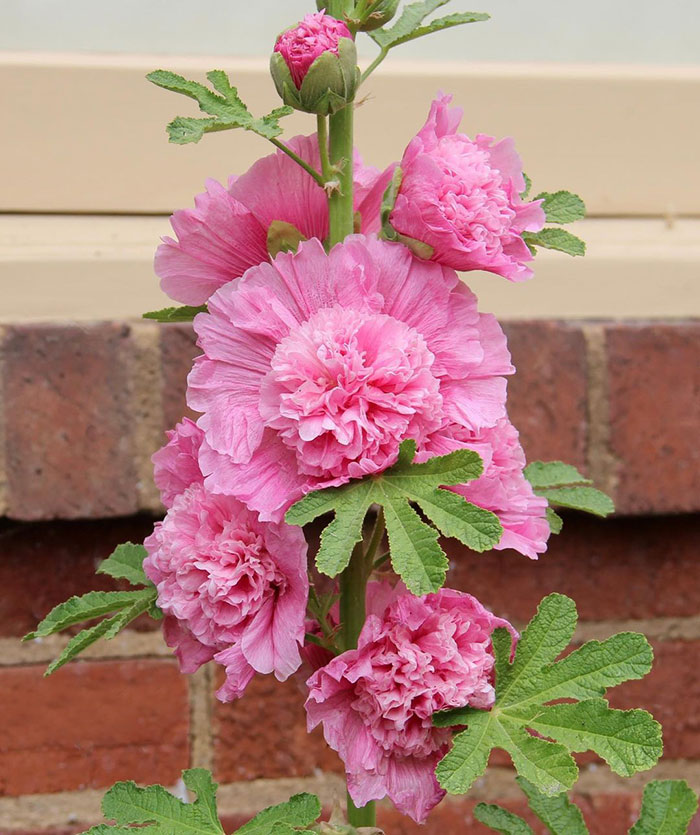
How to Grow Hollyhocks
Hollyhocks are a cherished addition to any garden. Planting thesebeautiful flowersfrom seeds is quite easy. With the right care, hollyhock flowers will thrive year after year.
Where to Plant Hollyhocks
Hollyhocks thrive in sunny locations with well-draining soil. Here are some key things to consider:
When to Plant Hollyhocks
Timing is crucial when planting hollyhock seeds. Hollyhock seeds can be sown either inearly spring or late fall, depending on your climate.
In milder zones, where winters aren’t too harsh, you can plant hollyhock seeds in the fall. It will allow the seeds to experience natural cold stratification (a process to break dormancy and initiate germination). If you are in a colder region, then wait till early spring. Plant the seeds after the last frost.
Image credits:Lisa Fotios.
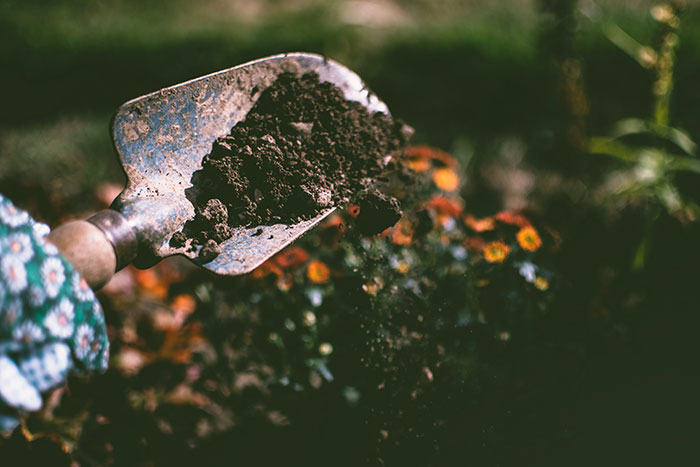
How to Grow Hollyhocks from Seeds
Hollyhocks can be grown from fresh seeds easily. To improve germination rates, soak the seeds in warm water for 24 hours before planting. This softens the hard seed coat and encourages quicker sprouting. Then, fill a seed tray with loose soil mix, add the pre-soaked seeds, and cover with compost. Regularly spray water on the mixture, and seedlings will start sprouting within 3–4 weeks.
When the seedlings grow a couple of inches, you will need to thin them to allow sufficient room. This will ensure there’s no overcrowding. For healthy growth, you’ll need to discard a few seedlings.
As your hollyhocks grow, they will need some structural support to prevent them from flopping over. To do so, gently tie them with sticks to maintain their upright posture.
Image credits:micheile henderson.
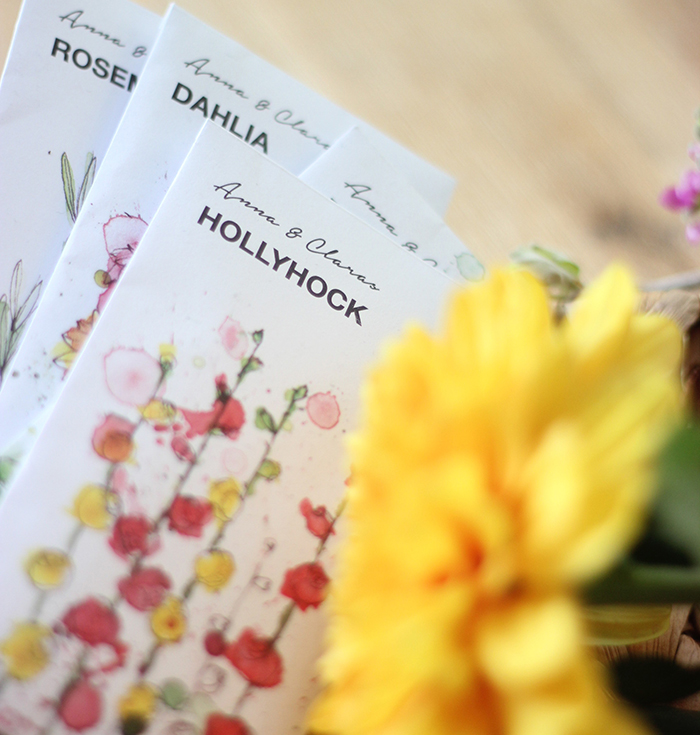
Can Hollyhocks be Grown in Containers?
While hollyhocks are typically grown in the ground, some dwarf varieties, like the Majorette, can be cultivated in containers or large pots. Ensure the containers have proper drainage, and provide staking if needed.
Image credits:Planting With Pablo.
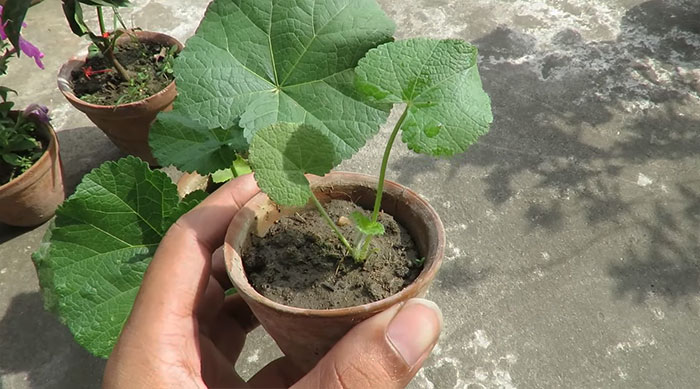
Caring for Hollyhocks
Fertilizing
Hollyhocks generally don’t require heavy fertilization. If your soil lacks nutrients, a balanced, slow-release fertilizer can provide the necessary nourishment. Make sure to fertilize only during early spring, just before the flowering season.
Deadheading
Deadheading is a process of removing spent flowers. It’s crucial for promoting continuous blooming. When you deadhead hollyhocks regularly, the plant directs its energy into producing new blossoms. This ensures a longer display of vibrant flowers.
Deadheading also prevents hollyhocks from self-seeding and potentially overcrowding your garden. If you desire self-seeding, you can leave some spent flowers in place.
Watering
Hollyhocks are relatively drought-tolerant plants. However, they benefit from consistent moisture, especially during summer. Water at the base of the plant to keep the leaves dry. This will reduce the risk of fungal diseases.
Image credits:jparkersbulbs.
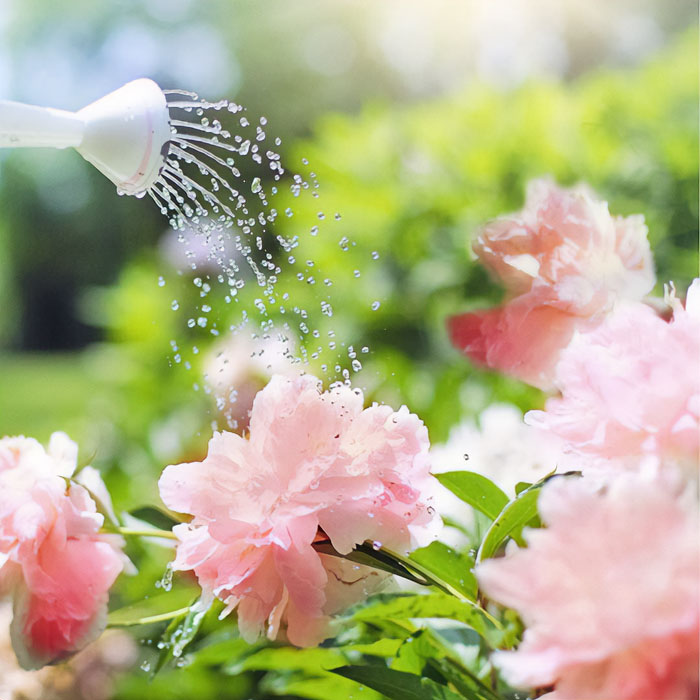
Pruning and Propagating Hollyhocks
Pruning is an essential aspect ofplant careas it maintains its health and appearance.
Deadheading is a form of pruning. Make sure to snip the stem just below the spent blossom. Do this regularly throughout the blooming season.
You can also do aesthetic pruning in the spring. Hollyhocks can develop tall, crowded centers with fewer flowers on the upper stems. If this happens, cut the upper, less productive stems to improve the plant’s appearance.
Conduct a more substantial pruning in late fall. Don’t be afraid to cut back the plant. Cut it down to a height of about 4-6 inches above the ground. This will protect it from the winter weather and encourage new growth in spring.
You should also prune at the first sign of disease or pest damage. Proactively remove affected leaves or stems to prevent the spread of diseases like hollyhock rust.
Image credits:Growing In The Garden.

Propagating Hollyhocks
For theseed collection method, collect the mature seed pods from the plant when they turn brown and brittle. You will start seeing seed pods just at the end of the flowering season. Separate the seeds from the pod and store them in a cool, dry place until you’re ready to sow them. Properly stored hollyhock seeds can remain viable for several years.
If you are planning to sow the seeds directly outdoors, then plant them in June–July when there’s plenty of sunlight. To start the germination indoors, you can plant them in a seed tray in early spring.
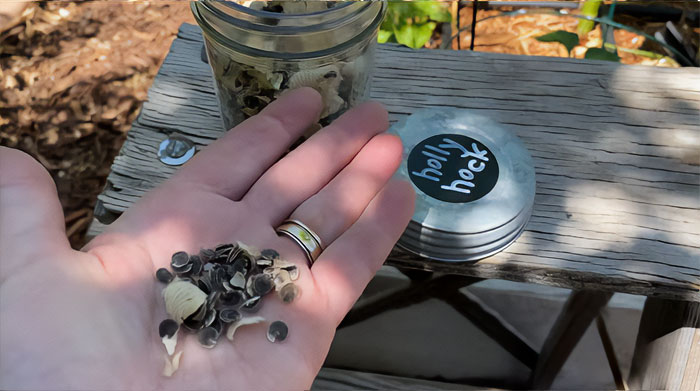
To propagate with thedivision method, carefully dig up the hollyhock plant you wish to divide. Make sure you don’t damage the roots. Gently pull apart the root system into smaller sections. Ensure each division has roots and a portion of the crown. Next, plant the divisions in their new locations. Then,follow the same steps as transplanting hollyhock saplings.
Root cuttingis a similar method of propagation. Choose a mature hollyhock plant and dig up a healthy section of the root system. Gently cut the roots into pieces and ensure each piece is a few inches long and has at least one viable bud. Plant the root cuttings directly in the soil, about 2–3 inches deep. Water thoroughly to settle the soil around the cuttings.
Image credits:WaY Out Here.
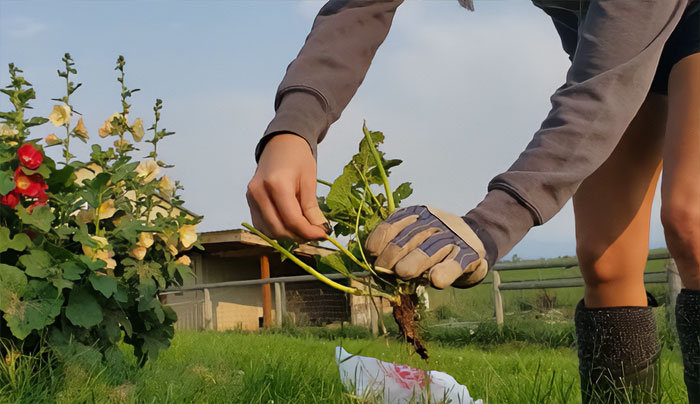
Common Pests and Disease Management
Hollyhocks are generally hardy, but they still face a few challenges. Look out for these common pests and diseases that may affect hollyhocks:
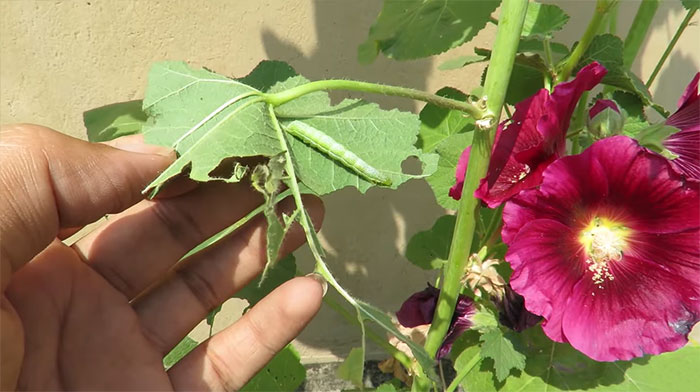
How to Prevent Hollyhock Rust?
This is a common fungal disease that affects hollyhock plants. It creates reddish-brown spots on the leaves. As the rust spreads, it interferes with the plant’s ability to carry out photosynthesis effectively. Reduced photosynthesis leads to stunted growth. It may also lead to fewer flowers and can weaken the plant, making it more susceptible to other diseases.
Luckily many modern cultivars are bred for improved disease resistance. Choose a variety, such as the Russian hollyhock, that is resistant to rust.
To manage rust, promptly remove infected leaves and stems. Then, use a rust-specific fungicide for control.
Image credits:the_itsb.
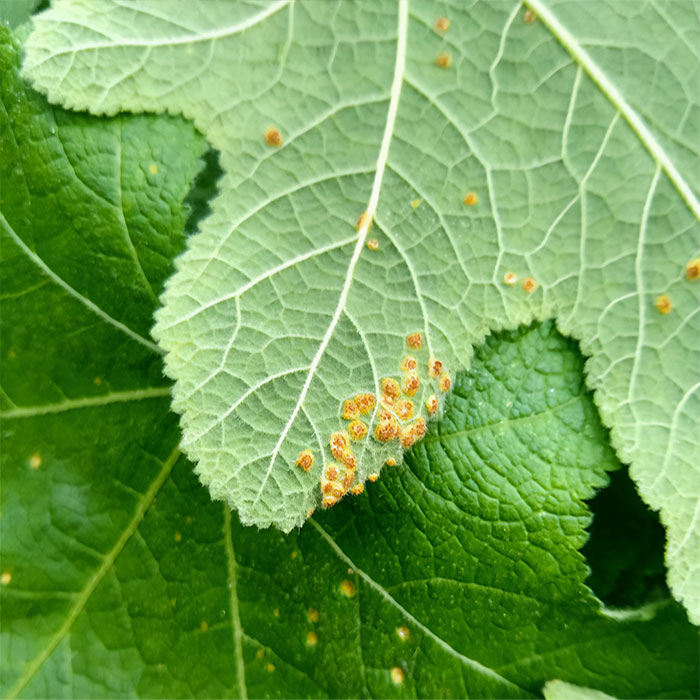
Hollyhock Companion Plants
Roses(Rosa rubiginosa)
Image credits:Skyler Ewing.

Delphiniums(Delphinium elatum)
Image credits:Zuzanna Musial.
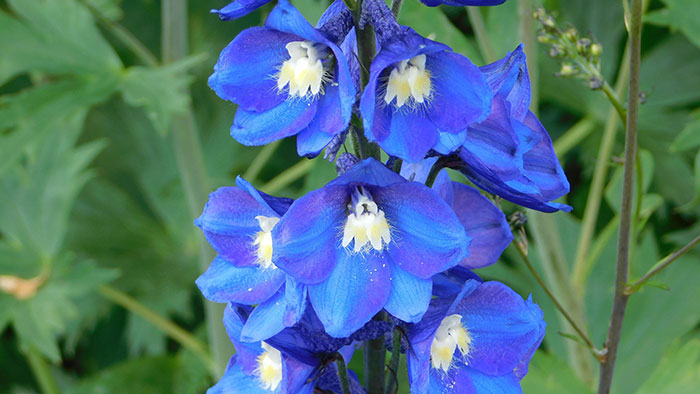
Clematis(Clematis L)
Image credits:Jolly Janner.
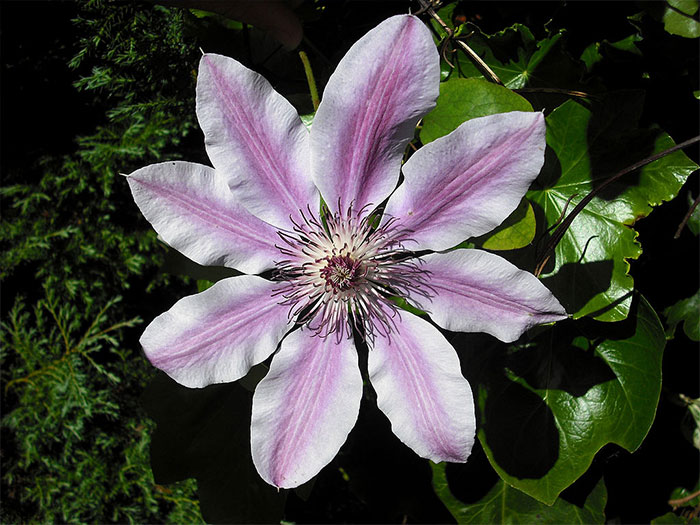
Peonies (Paeonia lactiflora)
Image credits:Jeffry Surianto.
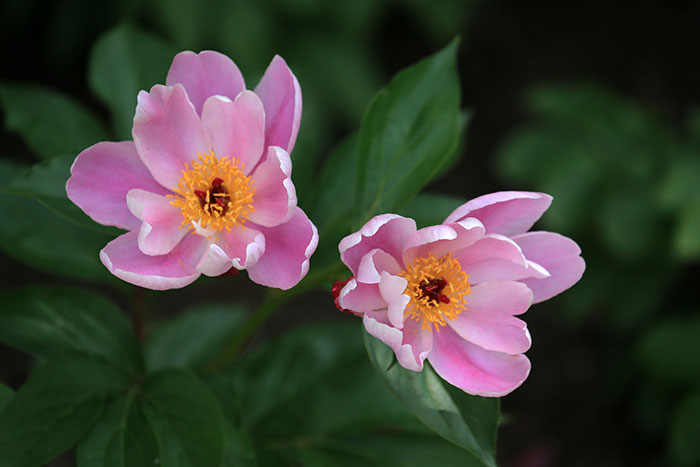
Ornamental Grasses
Image credits:Rohan Dewangan.
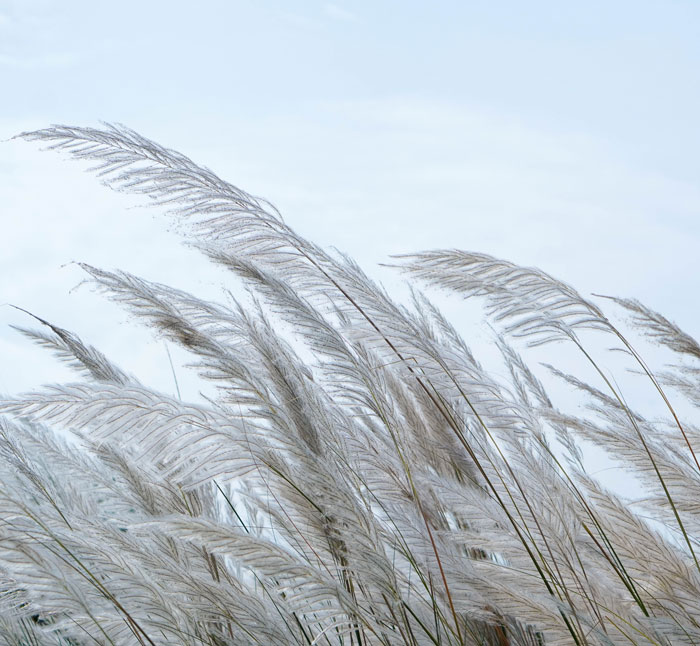
Lilies(Lilium)
Image credits:Camilla Bundgaard.
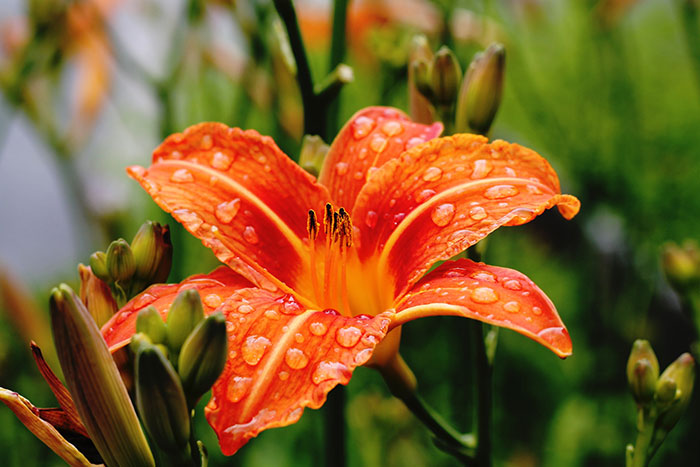
Geraniums(Pelargonium)
Image credits:László Glatz.
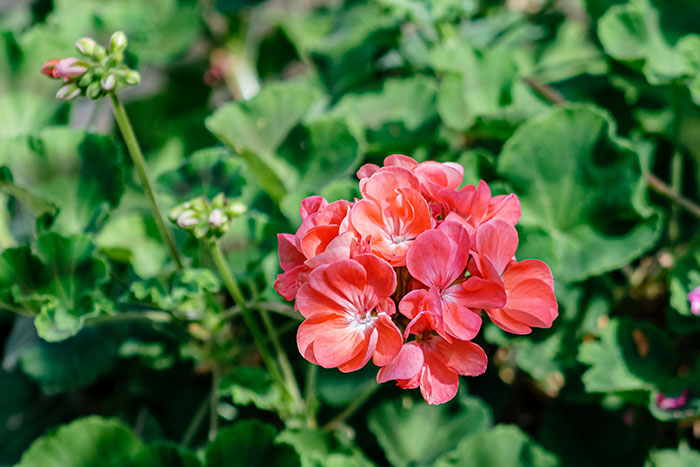
Common Questions about Hollyhocks
Let’s address some common questions and concerns people have about hollyhocks.
How Tall Do Hollyhocks Grow?
Hollyhocks are renowned for their impressive height. They can reach heights between 6–12 feet. The height varies with the variety, growing conditions, and the local climate. Also, note that young hollyhock plants may need support as they grow. You may need to tie them with sticks to prevent them from flopping over.
How Long Do Hollyhocks Bloom?
Where Do Hollyhocks Grow Best?
Hollyhocks thrive inUSDA hardiness zones2 to 10. They need at least 6–8 hours of direct sunlight each day. Plant them in a spot with abundant sunlight to promote healthy growth and prolific flowering.
Does Hollyhock Come Back Every Year?
Hollyhocks are typically considered biennials or short-lived perennials. In their first year of growth, they produce leaves and establish a strong root system. They usually don’t flower in the first year. In the second year, tall flowering spikes appear. After a prolific bloom of 3–4 seasons, these plants may start to decline. However, they often self-seed, allowing new hollyhocks to grow from the fallen seeds.
245views245views
You May LikePeople Are Sharing Their Decked-Out Bedrooms, And Here Are 30 Of The Most Amazing OnesŽydrūnė Trukanavičiūtė25 Houseplants to Transform Your Interior Into an Indoor GardenEligijus SinkunasCaring for Asparagus Fern: Tips for a Thriving Indoor PlantNatallia Pisarenka
Žydrūnė Trukanavičiūtė
Eligijus Sinkunas
Natallia Pisarenka
Home & Design